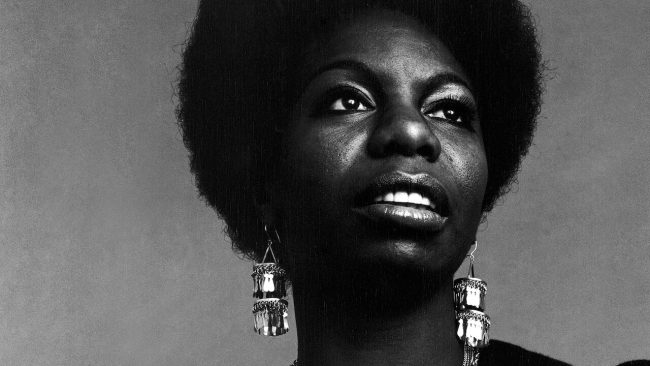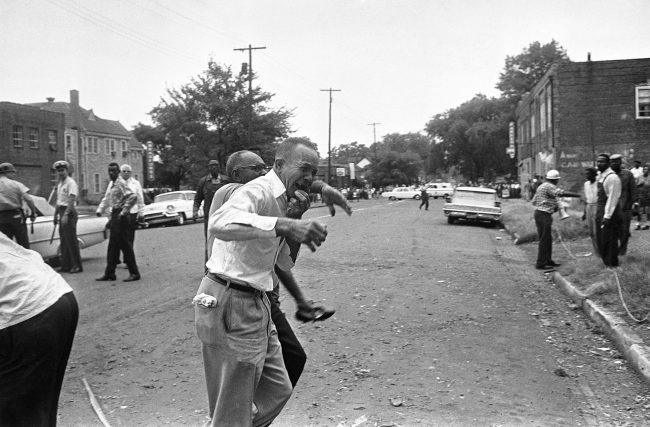Netflix documentary looks into the life of African- American artist, and civil rights activist, Nina Simone
Review by Aya Pfeufer
July 9th, 2024
Directed by Liz Garbus, “What Happened, Miss Simone?” is a compelling and fascinating documentary that explains the life of Nina Simone, a prominent African- American singer, songwriter, civil rights activist and composer. The documentary, on Netflix dissects Nina Simone’s journey through life and breaking through the music industry.

The documentary begins by showing Simone’s childhood. She grew up in Tryon, North Carolina. She began playing piano at a young age, and it was evident that she was gifted. By the age of six, she had begun playing regularly as a church pianist in Tryon and also took piano lessons. Simone studied classical music and learned pieces by Chopin, Bach, Beethoven, and many other composers. She completed one year at Juilliard music school in New York and later auditioned for a full scholarship at Curtis Institute of Music, but was denied entry due to racial barriers. She knew that she was “good enough”, but believed she was rejected due to being her race. Simone worked as a music teacher and accompanist; she continued to take piano lessons to bring her closer to fulfilling her dream of becoming a concert pianist.
Born Eunice Kathleen Waymon, she formed the stage name Nina [a nickname from her ex-boyfriend] and Simone [after Simonre Sigoret, a legendary French actress]. Simone created this name when she began singing and playing the piano at Midtown Bar and Grill, as she knew that her mother would be against her working at a bar. The documentary carefully explains the early start of Simone’s career in show business, and her early beginnings. Although Simone’s life dream was to become a classical pianist, she continued to sing and did what it took to find opportunities to showcase her talent and passion to an audience. She worked in clubs, in Atlantic City, from midnight to 7 am, under the name Nina Simone, to disguise herself. Simone recorded over forty albums between the years 1958 and 1974, her first recorded album was Little Girl Blue, and one of the songs on the album was “I Loves You, Porgy”, which later on became one of her more successful songs. She was both the accompanist and the vocalist, much of her piano playing was greatly inspired by baroque music. The combination of her deep soulful voice, with jazz and her skill for classical piano, was groundbreaking, and she topped the top 20 United States Billboard Charts.
In the early 1960s, Simone met Andrew Stroud, a policeman and New York City police detective. Later on, they married and had a daughter, Lisa Celeste. Stroud left his job to become Simone’s full-time manager, he also produced some of her songs. Her songs continued to become massive hits across the U.S., such as Ain’t Got No – I Got Life. As her success grew in the music industry, so did the [physical and psychological abuse] she faced from her husband only got worse. In her diary, she wrote “All I did was work, work, work. I was always tired. I worked like a dog. Andrew protected me from everyone except himself. I was scared of him. He would beat me up.”
Garbus’s documentary successfully highlights both Simone’s success in the music industry as well as the struggles in her personal life. Her husband made her work extremely hard, and she always had a packed schedule, whether it was performing at another gig or recording new songs. Over time their relationship only got more dreadful. The documentary showcases Garbus’s diligent approach to storytelling. Garbus includes concert footage with interviews with Simone’s daughter and close friends, which helps provide different perspectives to the story.
Simone also strongly believed in civil rights activism, which her husband thought was a complete waste of time. After the 16th Street Baptist Church bombing, she performed Mississippi Goddamn, which attracted a lot of attention for its message. Some of the lyrics were: “Lord have mercy on this land of mine / We all gonna get it in due time / I don’t belong here / I don’t belong there / I stopped believing in prayer.”

Her time was spent with intellectuals like Langston Hughes and James Baldwin. Simone consistently included the civil rights message in her recordings and live performances. She was an advocate and spoke during meetings, which was similar to Malcolm X and the Black Nationalist Movement. However, her political stance was detrimental to her career, and her private life was extremely difficult. She decided to leave the U.S. and leave as far as possible. Her behaviour became more erratic over time, and she was later diagnosed with bipolar disorder. Due to her political beliefs, her career took a U-turn, and she found herself performing at cafes, and struggling to get through each day. Simone said: “I was desperate. I was working for $300 a night. People couldn’t believe I was there, that I had fallen so far. I don’t regret being part of the Civil Rights movement but some of the songs hurt my career. The industry put a boycott on my records.”
Overall, “What Happened, Miss Simone?” sheds light on Nina Simone’s impact on jazz music and activism. To this day, Simone’s music remains significant and many continue to be inspired by her. She used her platform to advocate for equality and speak about racial injustices. Liz Garbus’s compelling documentary takes you through Nina Simone’s impact on music.
Share "Review: What Happened, Miss Simone?"
Copy










